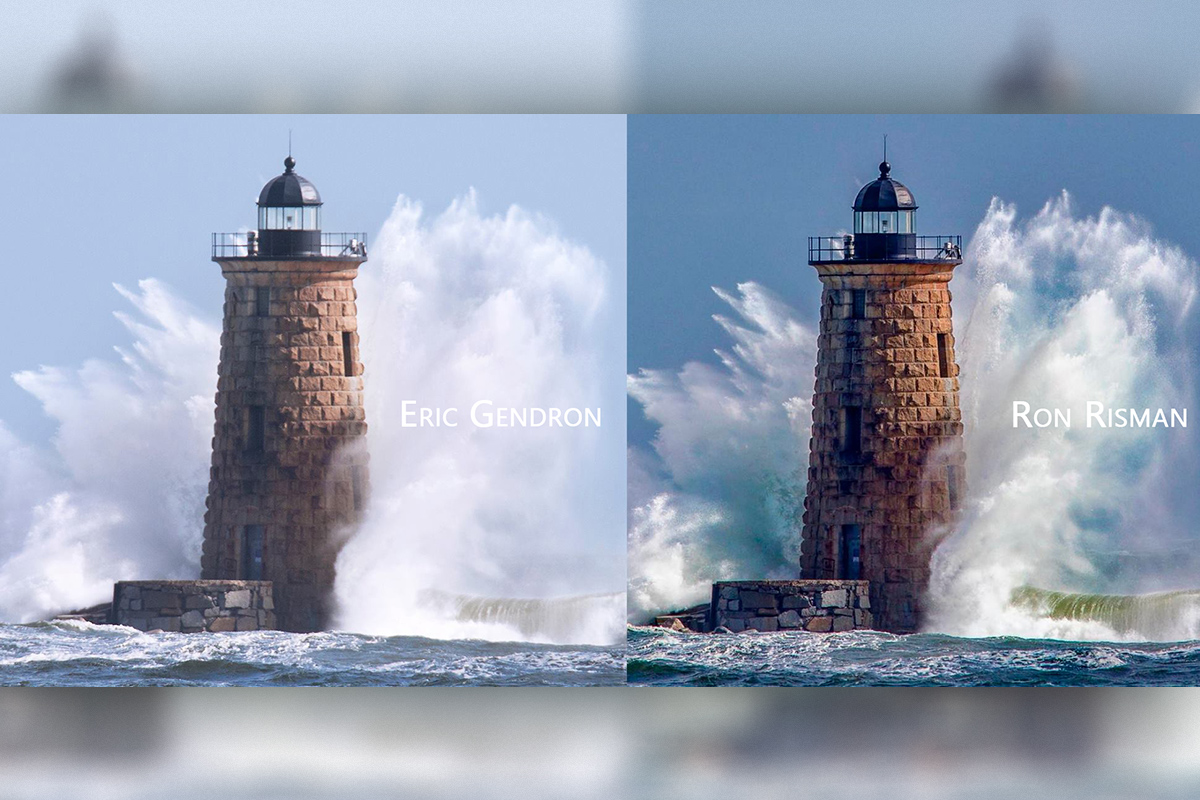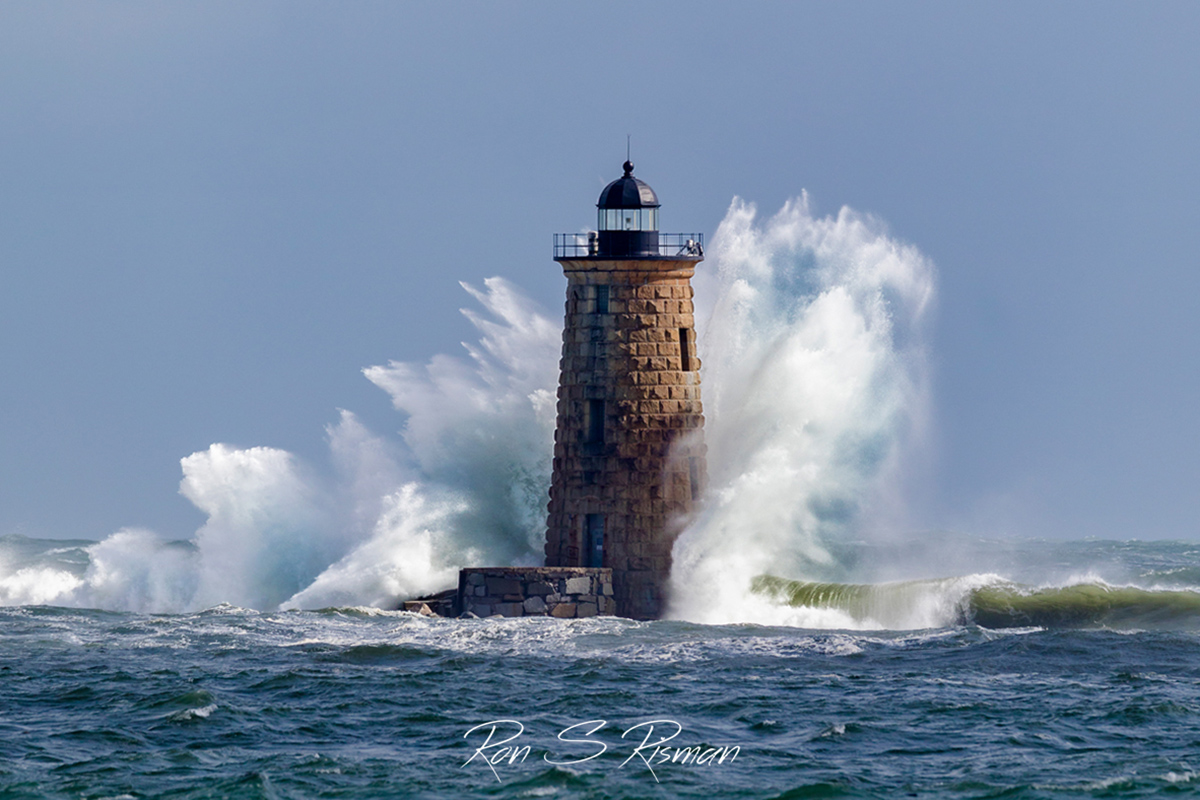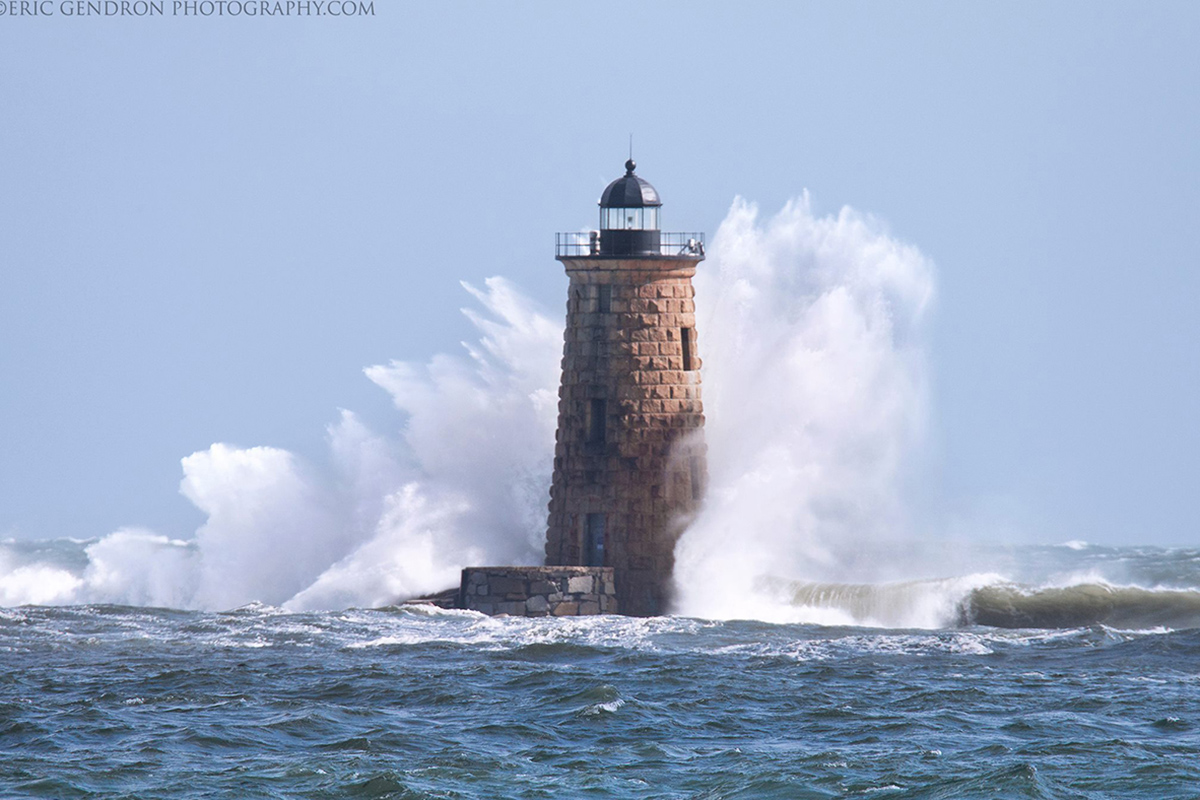These 2 Photographers Never Met, But They Took the Exact Same Photo

Two photographers captured photographs so much like one another that a stranger thought one of them was stolen.
Ron Risman, writing for the photography news site PetaPixel, said he went to Great Island Commons in New Castle, New Hampshire, to capture waves crashing against the Whaleback Lighthouse (pictured above). Risman, shooting with a tripod and long 150-600mm lens next to a tree, never noticed another photographer nearby. And Eric Gendron, a photographer just under a hundred feet away, also shooting the lighthouse, apparently never noticed Risman.
But even if they had spotted each other, they likely wouldn't have expected to have made the same shots. [The Best Science Photos of 2017]
I've done some photography work. And when at sports or news events, I've sometimes found myself shooting right next to rows of other photographers shooting at the exact same moments: a receiver leaping to snag a ball out of the air, a politician gesturing during a speech, a couple placing wedding rings on one another's fingers. But I've never seen two shots that looked exactly alike.
Shoot a moving scene in burst mode, and you'll see that photos taken just a fraction of a second apart look wildly different from one another.
There are just too many choices involved in photography for photos to repeat themselves. At the lighthouse, either photographer could have shifted his lenses so the tower was on the left of the picture or on the right. One might have included more of the sea, another more of the sky. Or they might not have zoomed in quite the same amount.
Even if they did make all the same choices, equipment differences can radically change how a final image looks. As Risman wrote for PetaPixel, he and Gendron shot with different cameras. Risman used a Canon 5D Mark IV, which has a larger "full frame" sensor, produces images that take in more of a scene. Gendron used a Canon 60D, which has a smaller sensor that can make images shot with similar lenses look more zoomed in. Risman suggested that, given that both photographers used 600mm lenses, Gendron must have been somewhat farther away.
Sign up for the Live Science daily newsletter now
Get the world’s most fascinating discoveries delivered straight to your inbox.

Still, both picked and shared favorite images from their shoots that were nearly identical, with the waves crashing against the lighthouse matching one another almost perfectly — a stunning coincidence with any dynamic, moving object, much less something as changeable as moving water.
Risman wrote that when a local TV station shared his photo on Facebook, someone in the comments accused him of stealing Gendron's image. When he saw Gendron's, he suspected his own image might have been stolen by this photographer he'd never met.

"We had what looked like the exact same image, taken at the exact millisecond in time, from what looked like the same exact location and perspective," he wrote.
But closer inspection revealed minute differences between the waves in the photos, most notably in the top left of the lighthouse. There's also a slight rotational asymmetry, and differences in the perspective on the waves, that become visible when you overlay the images. (They also clearly exposed their images slightly differently, with Gendron's coming out brighter.)
Still, the odds of two photographers producing such wildly similar photographs, and then both picking the same ones to share during a long day of shooting, are incalculably long. It's a remarkable coincidence.
Originally published on Live Science.










